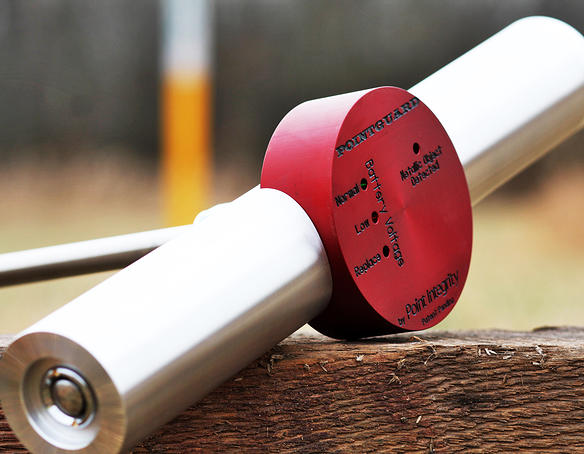March 2015, Vol. 242, No. 3
TechNotes
Point Integrity Solutions Awarded Patent

Southampton, NJ-based Point Integrity Solutions has been issued a patent for the pipeline probe tool known as the Point Guard. This enhances the ability of pipeline technicians to detect the pipe before damaging the coating or pipe itself.
Typically, field engineers and technicians rely on mapping, pipe locators and standard probe rods to determine the location of a pipeline before excavation begins. This allows for a chance of pipe or coating damage if a probe rod is applied with too much force or a probe mistakes a rock or hard surface for a pipeline.
Inventor and President of Point Integrity Solutions William R. “Rob” Shoaf had over 20 years of experience in the pipeline industry before creating the device. Shoaf is a licensed professional engineer in the state of New Jersey as well as a CP-4, the highest level earned from the National Association of Corrosion Engineers.
“After having been out in the field with technicians for years, I knew there was a better way to find pipe,” Shoaf said. “While the typical probe rod is still a staple of our industry, the Point Guard has a sensing technology that affords technicians and engineers a higher level of pipe location confidence. This reduces the risk of damage to a pipe or its coating during discovery and excavation.”
Typically, crews use a standard probe rod and replace it with the Point Guard as soon as there is an indication of contact with an object. Once the sensor at the tip comes in close proximity of any metal, the indicator light illuminates – giving the operator the reassurance of an accurate location.
The system is available in a standard 5-foot length, an extendable model offering 3-foot rods that screw together, and a non-conductive model for added operator safety. The sensor will detect metal through various coatings, including wax, enamel and epoxy up to 250 mils thick. Engraved markings every 6 inches make measuring depth of cover simple. This weather-resistant tool is designed to be rugged and is powered by two 9 volt batteries. Each comes with two replaceable polymer tips for the sensor and a Pelican case so that technicians can transport their tools in any vehicle.
[inline:point integrity image.jpg]





Comments